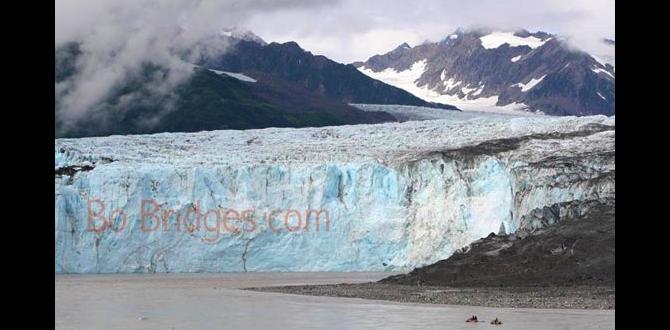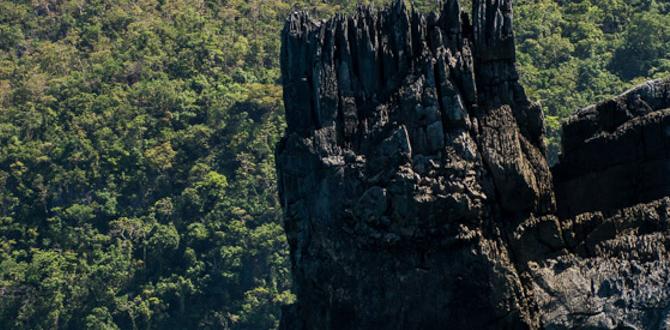Planning an Arusha winter trip guide? Essential planning covers understanding the dry season’s mild temperatures, packing layers, booking accommodations and safaris in advance, and preparing for wildlife viewing! Embrace the crisp air and clear skies for an unforgettable Tanzanian adventure.
Thinking about a trip to Arusha when it’s cooler? Many travelers worry about what to pack and when to go. It’s exciting to imagine the vast landscapes and incredible wildlife of Tanzania, but planning for different weather can feel overwhelming. Don’t let the thought of chilly mornings or packing the right gear dampen your spirits. This guide is here to help make your Arusha winter adventure smooth and enjoyable, step by step.
Your Arusha Winter Trip Guide: Essential Planning Made Simple
Arusha, Tanzania, sits at the gateway to some of Africa’s most spectacular natural wonders, including the Serengeti National Park and Mount Kilimanjaro. When we talk about “Arusha winter,” we’re actually referring to its dry season, which typically runs from June to October. This period is characterized by cooler temperatures, sunny skies, and low humidity, making it an ideal time for safaris and exploring the region. Forget sweltering heat; this is when Arusha truly shines for outdoor adventures.
Understanding Arusha’s “Winter” Climate
Unlike winters in many parts of the world, Arusha’s dry season doesn’t bring snow or freezing temperatures. Instead, you can expect pleasant daytime highs and cooler evenings and mornings. It’s a period of transition from the “long rains” to warmer, more humid conditions. This mild climate is perfect for long days of game drives and trekking without the discomfort of extreme heat.
Average Temperatures During the Dry Season (Arusha Winter):
| Month | Average High (°C / °F) | Average Low (°C / °F) | Rainfall |
|---|---|---|---|
| June | 26°C / 79°F | 12°C / 54°F | Low |
| July | 25°C / 77°F | 11°C / 52°F | Very Low |
| August | 26°C / 79°F | 12°C / 54°F | Very Low |
| September | 27°C / 81°F | 13°C / 55°F | Low |
| October | 27°C / 81°F | 13°C / 55°F | Moderate (start of short rains) |
As you can see, daytime temperatures are quite comfortable, but the evenings can get cool, especially at higher altitudes if you’re trekking or camping. This is why layering is key!
Why Choose Arusha During the Dry Season?
The dry season offers several advantages for travelers:
- Excellent Wildlife Viewing: With less water available, animals tend to congregate around permanent water sources, making them easier to spot. This is particularly true for the Great Migration in the Serengeti if your trip aligns.
- Clear Skies: The lack of rain means bright, sunny days, offering fantastic photographic opportunities and clear views of the landscape.
- Comfortable Temperatures for Activities: Hiking, game drives, and simply exploring are more enjoyable without intense heat.
- Fewer Mosquitoes: Dry conditions generally mean fewer disease-carrying mosquitoes, though it’s always wise to take precautions.
- Better Road Conditions: Unpaved roads in parks are less likely to be muddy and impassable, leading to smoother transfers.
Step-by-Step Planning for Your Arusha Winter Trip
Let’s break down the planning process into manageable steps.
Step 1: Determine Your Travel Dates and Duration
The dry season spans several months, so you have flexibility. Consider:
- Peak Dryness (July-August): Best for concentrated wildlife viewing, but can be busier and therefore more expensive.
- Shoulder Months (June, September-October): Still good weather, potentially fewer crowds, and better prices. October can see the start of short rains.
- Duration: A typical safari in the northern circuit (which Arusha is a hub for) often lasts 5-7 days. Add extra days if you plan on climbing Kilimanjaro or visiting Zanzibar.
Step 2: Book Flights and Accommodation
Because the dry season is a popular time to visit, it’s wise to book your flights and lodging well in advance, especially if you have specific preferences or are traveling during peak months.
- Flights: Fly into Kilimanjaro International Airport (JRO), which serves Arusha. International flights often connect through major hubs like Amsterdam, Doha, or Nairobi.
- Accommodation in Arusha: Arusha offers a range of options, from budget guesthouses and hostels to mid-range hotels and luxury lodges. Consider booking a place with good reviews and easy access to tour operators if you haven’t pre-booked your safari package.
- Safari Camps/Lodges: If you’re going on safari, your lodge or tented camp will often be booked as part of a safari package. Book these at least 6-9 months in advance for prime locations.
Step 3: Plan Your Safari or Activities
Arusha is the launching point for many iconic adventures. Decide what you want to see and do:
- Northern Circuit Safaris: This typically includes Serengeti National Park, Ngorongoro Conservation Area, Tarangire National Park, and Lake Manyara National Park.
- Mount Kilimanjaro Climb: The dry season offers the best climbing conditions, though it requires significant physical preparation and booking well in advance with a licensed operator.
- Day Trips: Consider cultural tours to local villages, visiting coffee plantations, or exploring Arusha National Park for a shorter wildlife experience.
When choosing a tour operator for safaris or climbs, look for companies with good safety records, positive reviews, and transparent pricing. Organizations like the Tanzania Tourist Board can offer guidance on licensed operators.
Step 4: Pack Smart for Mild Temperatures and Layers
This is crucial for comfort during the “Arusha winter.” Think layers! The key is to be prepared for cool mornings, warm afternoons, and potentially chilly evenings.
Essential Clothing Items:
- Base Layers: Lightweight, moisture-wicking tops (long-sleeved are great for sun protection and warmth).
- Mid Layers: Fleece jacket, warm sweater, or a puffer vest.
- Outer Layer: A windproof and water-resistant jacket is essential for early mornings, evenings, and higher altitudes.
- Trousers: Comfortable, durable trousers (hiking pants, convertible pants). Avoid noisy fabrics like nylon if possible, as they can startle wildlife. Khaki or neutral colours are best for safaris.
- Shirts: Short-sleeved and long-sleeved shirts in breathable fabrics.
- Warm Headwear: A beanie or warm hat for cold mornings and evenings.
- Sun Headwear: A wide-brimmed hat for sun protection during the day.
- Socks: Wool or synthetic socks. Bring a few pairs.
- Pajamas: Warm pajamas for cooler nights.
Footwear:
- Comfortable Walking Shoes/Hiking Boots: Broken-in boots are essential if you plan on any walking or trekking.
- Sandals or Comfortable Casual Shoes: For relaxing at the lodge or exploring Arusha town.
Accessories:
- Scarf or Neck Gaiter: Versatile for warmth and sun protection.
- Gloves: Lightweight gloves for particularly cold mornings.
- Sunglasses: For bright, sunny days.
- Binoculars: A must-have for wildlife spotting!
- Camera Gear: Plenty of memory cards and spare batteries.
A Note on Diapers for Travelers: For families or individuals needing personal care items, consider packing sufficient quantities of adult or child diapers. Travel can disrupt routines, and having reliable, comfortable products ensures peace of mind. Many modern adult diapers offer discreet protection and high absorbency, while child diapers are readily available for parents. It’s wise to store these in a waterproof bag within your luggage. For long journeys, products like TENA overnight diapers or Huggies Little Movers can offer assurance. Carrying a few extra in your daypack can also be incredibly helpful.
Step 5: Health and Safety Preparations
Your health is paramount for an enjoyable trip.
- Consult Your Doctor: Visit your healthcare provider 4-6 weeks before your trip regarding recommended vaccinations and malaria prophylaxis. Arusha and surrounding safari areas are considered malaria-risk zones.
- Yellow Fever: A Yellow Fever vaccination certificate may be required for entry into Tanzania, especially if you are arriving from a country with a risk of Yellow Fever transmission. Check the latest requirements from the CDC or your national health authority.
- Travel Insurance: Comprehensive travel insurance is non-negotiable. Ensure it covers medical emergencies, evacuation, trip cancellation, and lost baggage. For Kilimanjaro climbs, specific insurance covering high-altitude trekking is required.
- First-Aid Kit: Pack a basic first-aid kit with essentials like antiseptic wipes, bandages, pain relievers, anti-diarrhea medication, and any personal prescriptions.
- Sun Protection: High SPF sunscreen, lip balm with SPF, and insect repellent (containing DEET or Picaridin) are essential. While mosquitoes are less prevalent in the dry season, they can still be present, especially near water sources.
Step 6: Currency and Communication
Be prepared financially and stay connected.
- Currency: The local currency is the Tanzanian Shilling (TZS). US Dollars are widely accepted, especially for park fees, larger purchases, and tipping, but it’s good to have some local currency for smaller expenses. Ensure USD bills are newer (post-2009) and in good condition.
- ATMs and Credit Cards: ATMs are available in Arusha, but they can sometimes be unreliable. Credit cards are accepted in larger hotels and some tour operators, but not typically in smaller establishments or for park fees.
- Communication: Consider getting a local SIM card upon arrival in Arusha for more affordable data and calls. Wi-Fi is available in most hotels and lodges, though it can be slow or intermittent in more remote areas. Inform your bank and mobile provider of your travel plans.
Packing List Summary Table
To help visualize, here’s a quick packing list for your Arusha winter adventure:
| Category | Essential Items |
|---|---|
| Clothing | Layering tops (base & mid), windproof/water-resistant jacket, comfortable trousers, long-sleeved shirts, warm beanie, wide-brimmed hat, warm socks, pajamas. |
| Footwear | Broken-in hiking boots, comfortable casual shoes/sandals. |
| Accessories | Scarf/neck gaiter, lightweight gloves, sunglasses, binoculars, camera gear. |
| Health & Hygiene | Sunscreen, insect repellent, personal prescriptions, basic first-aid kit, hand sanitizer, toiletries. |
| Documents & Money | Passport, visa (if required), flight tickets, travel insurance details, credit/debit cards, some USD cash, local currency (TZS). |
| Electronics | Phone, charger, power bank, travel adapter (Type G or D is common). |
Traveler Tips for Comfort and Convenience
Here are a few extra tips to make your trip even smoother:
- Stay Hydrated: Even though it’s cooler, the dry air can still dehydrate you. Drink plenty of bottled water throughout the day.
- Respect Wildlife Etiquette: Maintain a safe distance from animals, never feed them, and avoid loud noises. Your guide will provide specific rules.
- Pack a Daypack: A small backpack is perfect for carrying essentials like water, snacks, your camera, a light jacket, and sunscreen during daily excursions.
- Learn a Few Swahili Phrases: “Jambo” (Hello), “Asante” (Thank you), and “Karibu” (Welcome) go a long way in showing respect and connecting with locals.
- Tipping: Tipping is customary for guides, drivers, and lodge staff. Your tour operator will usually provide a guideline for tipping amounts.
Conclusion
Embarking on an Arusha winter trip promises an incredible experience filled with majestic wildlife, breathtaking landscapes, and comfortable exploration. By understanding the region’s unique dry season climate and following these essential planning steps, you can set yourself up for a truly unforgettable adventure.
From packing the right layers to arranging your safaris and health precautions, thoughtful preparation ensures you can focus on the magic of Tanzania. So, pack your bags, bring your sense of wonder, and get ready to discover the best of Arusha during its glorious “winter.” Your Journey Essentials are covered, and a spectacular trip awaits!
Frequently Asked Questions
Q1: Is Arusha safe to visit during the dry season?
A: Yes, Arusha and the popular safari destinations are generally very safe for tourists, especially when traveling with reputable tour operators. Standard travel precautions apply, but the dry season is a secure and enjoyable time to visit.
Q2: What kind of clothing is best for safaris in Arusha’s “winter”?
A: Neutral-colored, breathable clothing is best. Think khaki, beige, olive green, or brown. Avoid bright colors or dark colors like black and navy, which can attract insects or make you feel too warm. Layers are crucial: a light t-shirt, a warm fleece or sweater, and a windproof jacket for mornings and evenings.
Q3: Do I need Malaria medication for Arusha in June-October?
A: Yes, it is highly recommended to consult your doctor about malaria prophylaxis. Although mosquito activity decreases in the dry season, malaria can still be a risk, especially in wildlife areas. Always use insect repellent.
Q4: How much should I budget for a trip to Arusha in the dry season?
A: Costs vary significantly based on your accommodation choices, safari duration, and activities. The dry season is peak season, so expect higher prices for safaris and lodges. Budget from $250-$600+ USD per person per day for a mid-range to luxury safari experience, excluding flights. Budget airlines and hostels are available for Arusha town itself.
Q5: What are the best safari parks to visit in Arusha during the dry season?
A: The Northern Circuit parks are excellent. Serengeti is world-renowned for the Great Migration (which may be in the western or northern corridor during these months), Ngorongoro Crater offers incredible densities of wildlife year-round, Tarangire is famous for its large elephant herds, and Lake Manyara provides diverse habitats.
Q6: Can I go on a Kilimanjaro climb during Arusha’s “winter”?
A: Absolutely! The dry season (June-October) is considered prime trekking season for Kilimanjaro, offering the clearest skies and generally stable weather. However, it is still a challenging climb, and preparation is key.
Q7: What if I need to manage adult diaper needs while traveling?
A: Pack discreetly in waterproof bags. Many modern adult diapers are highly absorbent and comfortable for travel. Consider overnight or maximum absorbency options for peace of mind. Pre-planning and packing enough for your trip is the most reliable strategy.




